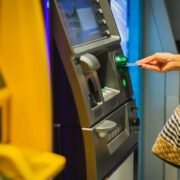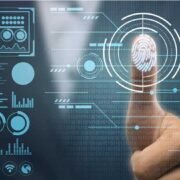
The Role of Facial Recognition in Financial Transactions and Fraud Prevention
Introduction
With the rapid technological advancement marked in this era, facial recognition technology is revolutionizing finance sets of transactions and fraud prevention. As businesses and consumers look for seamless, secure, and efficient solutions, facial recognition technology presents unprecedented opportunities to rethink how financial transactions are conducted and fraud detected and prevented.
This paper discusses the growing importance of facial recognition in financial services, applications and benefits, challenges, and future prospect given privacy and other ethical concerns.
Definition of Facial Recognition Technology:
What is facial recognition? Advanced algorithms in facial recognition technology can identify or verify people based on facial features extracted from images or videos. It maps unique facial characteristics, such as the distance between eyes, nose, and mouth, to yield a digital “faceprint.” The faceprint can then be stored for later matching against existing databases to identify or verify a person.
The precision, speed, and easy integration with existing systems have made the technology an attractive solution in broad sectors. In finance, it has been useful not only to businesses but also to consumers, enhancing security and helping to smooth out processes.
More and More Integral to Financial Services
The financial sector has always used secure authentication methods, from PINs to biometric systems such as fingerprint and iris scans. The increasing use of digital banking and mobile payment platforms necessitates more complex security measures. Facial recognition is the most preferred biometric method today because it is non-intrusive and very accurate.
Banks and financial institutions are using facial recognition in securing transactions while creating much better experiences for customers. Whether it is an online login system for banking or catching fraud, this technology is shaping how financial services are delivered.
How Facial Recognition Works in Financial Transactions
The Technology Behind Facial Recognition
The hardware used is through cameras combined with software that houses machine learning algorithms. The system takes a photo of the face, and then analyzes the facial characteristics, comparing it to a faceprint kept in a protected database registered earlier. A more sophisticated system can recognize liveliness; it will prevent spoofing through a photograph or video.
Integrating with Payment Systems
Facial recognition fits well in the current payment systems. For example, it can replace the traditional password of mobile payment applications to allow users to authenticate a transaction using just their sight. And, facial recognition-enabled ATMs can provide card-less withdrawals in exchange for reduced possibilities of card theft and skimming.
Authentication Procedure
The authentication procedure typically involves three steps:
Enrollment: Users enroll their facial data during account setup.
Verification: When a user enters into a transaction, the system scans the face of the user and then matches it with the information it has stored.
Authentication: If there is a valid match, then the transaction is allowed to go through
This gives security by making customer interactions smoother thus making financial transactions faster
Applications of Facial Recognition in Financial Services
Improving Safety for Online and Mobile Banking
Facial recognition serves as an added layer of security for online and mobile banking. Passwords, being easily hackable or fishable, make it much more complicated for unauthorized access through biometric authentication.
Most of the banks have already enabled login access to mobile banking applications for their customers through facial recognition, thereby facilitating safe access without sacrificing comfort.
Streamlining Customer Sign-On
Customer onboarding often involves identity checks via physical documents or manual authentication, which is cumbersome and thus time-consuming. Facial recognition automatically cross-references an individual’s face against government-issued photo IDs. Not only do these speed up the formation of accounts but aso minimize the chances of human errors.
Touchless Payments and ATMs
Facial recognition supplants cards and mobile devices with facial scans and thus contactless payments are completed. This is mainly helpful in a post-pandemic world where the number of touchless solutions increases day after day. In this connection, facial recognition machines installed at ATMs help clients withdraw cash without a card, thereby boosting security as well as convenience.
Facial Recognition for Identity Theft Prevention
Identity theft detection
Prevention of identity theft
Identity theft is a growing concern in the financial sector. Facial recognition will help mitigate this risk as it verifies the identity of users in real-time. Fraudsters would fail facial authentication checks, making it harder to impersonate legitimate account holders.
Real-Time Fraud Detection Systems
The facial recognition systems can be integrated with real-time fraud detection tools that automatically identify suspicious activities. For instance, if an account was accessed from an unusual location, a facial scan can be initiated by the system to authenticate a user’s identity before processing such a transaction.
Minimizing False Positives for Fraud Alerts
One of the most common issues with fraud prevention is false positives, or genuine transactions being identified as fraudulent. Facial recognition minimizes such incidents by providing an accurate form of identity verification to let through genuine users without interrupting them.
Benefits of Facial Recognition in Finance
Improved Security and Reduced Fraud
Facial recognition increases security because it becomes pretty hard for fraudsters to avoid the recognition systems. Unlike passwords and PINs, facial biometrics cannot be stolen or duplicated easily; thus the rate of fraud is pretty low.
Customer Convenience
The technology eliminates the hustle of remembering long passwords or the physical cards that one needs for a transaction. Using facial recognition, customers can now undertake transactions with much less effort on their part, thus making it much more comfortable for them.
Faster Processing of Transactions
Facial recognition accelerates the processing speed of transactions because identity verification occurs automatically. From opening a bank app to authenticating a transaction, it is almost immediate.
Problems and Issues
Privacy and Ethical Issues
The widespread use of facial recognition technology raises significant privacy concerns. Biometric data can be misused or even cause data breaches, which compromise the identities of users. In addition, the ethical consideration of mass surveillance and unapproved collection of data is also raised.
Accuracy and Bias Issues
These systems of facial recognition are not flawless. There is a study that claims that certain algorithms have biases and hence accuracy rates for specific demographics are slightly lesser. This makes the system suffer from a lack of trust, and hence, unfair treatment of particular users.
Regulatory Compliance
Financial applications of facial recognition are much more heavily regulated. Financial institutions need to comply with data protection-related laws, like GDPR, CCPA, etc., collection, storage, and use of biometric data.
Conclusion
Facial recognition is changing the finance industry by offering greater security and a more pleasant experience to customers, but everything depends on a robust fraud prevention mechanism. However, this process has several challenges attached to it: privacy, bias, and regulatory compliance.
Only then would the potential of this technology be maximized by financial institutions to fully cash in on the fruits by finding a fine balance weighing positives versus negatives in using it. Ethical practice and a sophisticated solution would thus put them well in stride toward a bright and safe future for finance.
This paper captures the relevance and prospects of face recognition in finance by considering a general perspective on its applications, advantages, and disadvantages.






